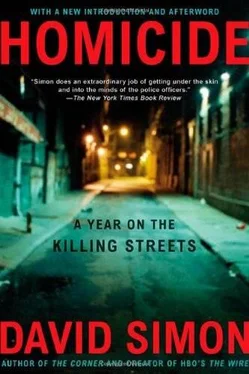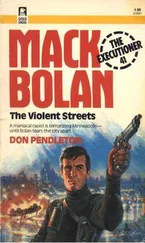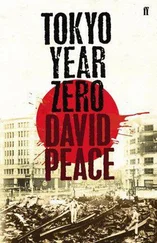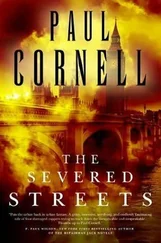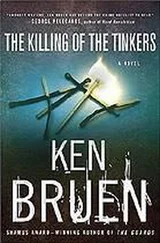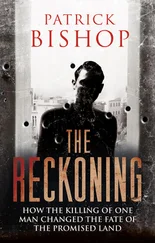“Just make sure she don’t show up for court,” Kincaid tells him. “If you can do that, you’ll probably be all right.”
Back in D’Addario’s office, the young plainclothesman is writing his own report of the incident, electing on the advice of his district commander to give a voluntary statement to the detectives. By law, any attempt to compel an officer’s statement makes that information inadmissible in court, and the detectives are under standing orders from prosecutors to do nothing more than request a statement from any officer involved in a shooting. Since the Monroe Street probe, however, the police union has been urging officers not to give any statements-a policy that in the long run is likely to breed trouble. After all, if a homicide detective can save another cop, he won’t hesitate to do so; but any cop who refuses to explain his actions is just asking for a grand jury investigation. On this night, however, the major from the Western manages to convince his man to consent to an interview, thereby giving the detectives room to work.
The officer’s report conforms to the suspect’s own statement that the plainclothesman fell on the hood of the car, after it jerked forward three or four feet, then fired a single shot through the windshield. The interview with the prostitute provides further corroboration. Not that she saw all that much, she tells the detectives, her field of vision at the time being somewhat limited.
Slowly, methodically, the five-page report begins to come together beneath the hum of Kim Cordwell’s word processor. Reading the draft, D’Addario pencils a change or two and suggests the rewording of a few critical sections. When it comes to police-shooting reports, D’Addario is something of an artist; eight years in homicide have trained him to anticipate the likely questions from the command staff. Rarely, if ever, has a shooting report bounced down the ladder after the lieutenant put his mark on it. As awkward and excessive as the use of deadly force might have seemed out on that parking lot, it reads squeaky clean in the finished product.
Nolan watches the paperwork progress and again tells himself that they can do without Edgerton and that it’s better, after all, to get a full night’s work out of Harry on Thursday rather than call him downtown two hours into a shift.
But two hours later, just as the floodwaters have started to recede, the phone rings again, this time with a shooting call from North Arlington Avenue on the west side. Kincaid leaves the last of the paperwork from the police shooting behind, grabs the keys to a Cavalier and drives twenty or thirty blocks to watch the sun rise over a dead teenager, his long frame stretched across the white asphalt of a back alley. A stone whodunit.
When the dayshift detectives begin arriving a little after seven, they find an office in a state of siege. Nolan is at one typewriter, working on his 24-hour report as his witnesses wait in a back room for transport back to the Eastern. McAllister is down at the Xerox machine, copying and collating his police-shooting opus for everyone above the rank of major. Kincaid is in the fishbowl, haggling with three west-siders who are trying hard to avoid becoming witnesses to a disrespect shooting that happened right in front of their eyes.
McAllister manages to slip out a little after eight, but Kincaid and Nolan end their day in the afternoon rush at the ME’s office, waiting for their respective bodies to be examined and disassembled. They wait together in the antiseptic sheen of the autopsy room corridor, and yet they are anything but together after this shift.
The issue, once again, is Edgerton. Earlier in the night, Kincaid overheard Nolan’s telephone call to the missing detective; if he hadn’t been knee deep in witnesses and incident reports, he would have boiled over on the spot. Several times during the night he had been ready to blast Nolan about it, but now, with the two of them alone in the Penn Street basement, he’s too tired to argue. For the moment, he satisfies himself with the bitter thought that in his whole career, he never managed to forget when the hell he was supposed to be working.
But Kincaid will have his say; that much is certain. The air of compromise, the teasing banter, the rough acknowledgment of Edgerton’s effort to handle more calls-all of that is out the window as far as Donald Kincaid is concerned. He’s had it with that crap. He’s had it with Edgerton and with Nolan and with his place in this goddamn squad. You’re scheduled to be in at 2340 hours, you’re in at 2340, no later. You’re scheduled to work the Tuesday shift, you come to work on Tuesday. He didn’t give the department twenty-two years to put up with this kind of bullshit.
Roger Nolan, for his part, simply doesn’t want to hear it anymore. To his way of thinking, Edgerton is a good man who works his cases harder than most of the men in homicide, and besides, he’s back to clearing murders. Okay, thinks Nolan, so every now and then Harry gets out there in the ozone. So he got his shifts wrong. So what should we do? Make him write a 95 explaining why he’s a space cadet? Maybe dock him some vacation days? What the hell good is that? That shit didn’t work in patrol and it sure wasn’t the way to do business in homicide. Everyone knew the story about the time a supervisor had demanded that Jay Landsman write a 95 explaining why he was late for a shift. “I was late for duty,” Landsman wrote, “because when I left the house to come to work there was a German submarine parked in my driveway.” For better or worse, that was homicide, and Nolan simply wasn’t going to jam it to one detective to make another feel better.
The middle ground is gone. On this, the morning after, Kincaid keeps the rein on his anger and says nothing. Nor does he give Edgerton more than a passing comment when both men show up for their shift on Friday.
“I don’t even blame Harry,” Kincaid tells the other squad members. “I fuckin’ blame Roger for not making him straighten up.”
But over the next few days, Kincaid’s anger becomes white heat, and the others-McAllister, Garvey, even Bowman, who is more likely than not to side with Kincaid in this dispute-know enough to leave it alone and stay out of the way. In the end, the inevitable explosion comes on a four-to-twelve shift that marks Edgerton’s next off-day. It’s a shift comprised entirely of yelling and cursing, of accusation and counteraccusation, that finishes with Nolan and Kincaid shouting at each other in the main office, emptying all their guns in the kind of firefight that leaves few pieces to be picked up. Nolan makes it clear that he regards Kincaid as more trouble than anything else, telling the detective to mind his own business and then accusing him of failing to work his cases hard enough or long enough. And while it’s true that Kincaid has a healthy share of open files over the last two years, it’s also fair to say that Nolan is offering up the kind of criticism that no veteran detective is willing to hear. As far as Donald Kincaid is concerned, he’s gone as soon as a vacancy opens up on either shift.
After showing its fault lines for more than a year, Roger Nolan’s squad is finally breaking apart.
The sights, the sounds, the smells-there is nothing else in a detective’s frame of reference to which that basement room on Penn Street can be matched. Even the crime scenes, no matter how stark and brutal, pale against the process by which the murdered are dissected and examined: that is truly the strangest vision.
There is a purpose to the carnage, a genuine investigative value to the gore of human autopsy. The legal necessity of the postmortem examination is understood by a detached and reasoning mind, yet the reality of the process is no less astonishing. To that part of the detective which calls itself professional, the medical examiner’s office is a laboratory. And yet to that other part, which defines itself in hard, but human terms, the place is an abattoir.
Читать дальше
